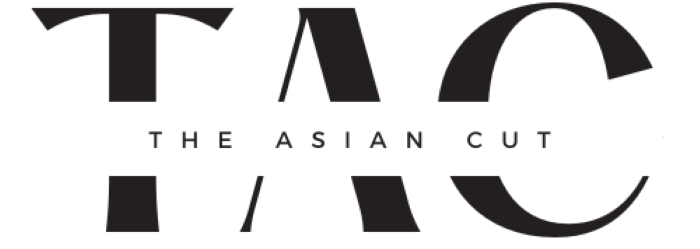The cinematic scope of the Asian diaspora is a vast topic, fittingly so, given the range of identities and experiences. In Christine Choy and Renee Tajima-Peña’s Who Killed Vincent Chin? and Julie Ha and Eugene Yi’s Free Chol Soo Lee, we have two documentaries focused on Asian-American tragedies and miscarriages of justice. Who Killed Vincent Chin?, originally released in 1987, recounts the murder of Vincent Chin, an automobile engineer, by Ronald Ebens and Michael Nitz. A racially-motivated killing, the two evaded justice through the court system. Free Chol Soo Lee, released this year, investigates the case of 20-year old Korean immigrant Chol Soo Lee, who was convicted of murdering a gang member in San Francisco’s Chinatown in 1973. Tried on flimsy evidence, Lee was sentenced to life in prison. The film hones in on his struggle behind bars and the social justice movement for his freedom started by the Asian-American community. Both films present the events of the respective incidents and their aftermath, examining the tragic nature of both cases, and searingly critiquing the miscarriages of justice.
Documentaries are a powerful cinematic art form, but there can be a tendency to sensationalize to the point of obfuscating the central message. Fortunately, none of that can be found here. These films simply bring these heartbreaking stories to light, focusing on both the individuals and the surrounding community.
Who Killed Vincent Chin? was released a few years after Chin’s murder, while Free Chol Soo Lee was released several decades following the Chol Soo Lee Movement advocating for his release. As such, they offer different approaches when telling the two cases, one with a certain immediacy and the other with years of retrospect. The power of the documentary form is affirmed by recounting the facts in a blunt and incisive manner, yet being deeply empathetic. These documentaries are brutally unsparing, but also grant the potential for catharsis through reflection.

Who Killed Vincent Chin? introduces Chin with his whole life ahead of him. He was due to be married in a few days, his mother was going to live with him, he had a great job and friends. This was all cruelly taken away from him by two white men, who beat him to death while calling him anti-Asian slurs — their vile actions being one of many anti-Asian crimes in America. The film utilizes interviews with the murderers, Ebens and Nitz, and their families to show the ways in which racism permeates a mentality of indifference. Choy and Tajima-Peña let the interviews play out in such an organic fashion, it never feels like they’re trying to lead their subjects onto a specific point regarding Chin. They document rather than impose an opinion, as Ebens and Nitz and their families attempt to create sympathy for themselves, thinking that a young Asian man’s life matters less than a white murderer missing Father’s Day. This indifference towards Asian lives amplifies our indignation at the lenient three year probation period and fine without prison time for the murder of Chin. Letting these individuals speak their piece, in an unnervingly casual fashion, exemplifies the insidious ways in which racism has become so ingrained into society.
We also get a glimpse into Chin’s life through his loved ones. Choy and Tajima-Peña’s interviews with their subjects who were affected by the tragedy makes for an emotionally devastating watch. Chin’s mother and her anecdotes about him are heartbreaking, and her standing by his grave is an image that will linger in your mind for a long time. Yet none of it feels exploitative. The documentarians do their job of just chronicling what happened, and letting the voices of his friends and family be heard. Hearing from his best friend, Gary Koivu, you feel the rawness of Chin’s departure but also an appreciation for the memories he left behind. Noting the life he had led and intended to lead, Choy and Tajima-Peña do not try to make him into a martyr or symbol — ultimately, Chin’s life was not just defined by the tragedy that took it away from him. He was simply a man who deserved to live, and had that so cruelly torn away from him.
Free Chol Soo Lee similarly does not merely focus on the injustice that circulated through news cycles, but also on the inner life of the victim. Lee became a source of strength for a community that rallied around him, which is contrasted by the documentary’s exploration of the vulnerabilities and heartbreaking predicament of the soul in the middle of it all. Talking heads are used for his acquaintances, the legal defence team, and members of the Asian-American community who fought for the injustices wrought by his wrongful conviction. They note how the impact of this case and the subsequent social movement continues to this day. This bigger picture is essential to understanding the sheer scale of the unifying effort that brought justice for Lee. Just as important is Ha and Yi’s intimate focus on Lee’s loneliness while in prison, his troubling experiences captured in animated recreations, as his letters and writings are read by Sebastian Yoon, a former convict turned activist and beneficiary of the Bard Prison Initiative. Having Lee’s voice come through by way of Yoon’s narration allows another layer for the documentary form to assert its efficacy.

Where a news report may only go so far as to recount the details of a case, a documentary allows us to look deep into the individual; for example, Lee’s letters offer valuable insight into his internal dialogue. It’s hard to say if a film can ever let us truly know a person, but having their voice come through is an essential part to moving in that direction. Free Chol Soo Lee does this powerfully, particularly when crafting a layered perspective of the experience Lee had to endure in confinement. It’s notable that the film does not stop its journey after the “victory” of his exoneration by the courts. It shows how Lee, even after his vindication, struggled later on in life with legal issues and troubles adjusting to society.
Crucially, the film never passes judgment on Lee’s challenges. It observes and never shies away, but it also empathizes and shows how later on in life, with the benefit of clarity and reflection, Lee embraced being a figure of change and imparted his experiences onto others. The final few minutes of the film, where we see Lee in his later years giving speeches at Asian-American conferences, is a sobering realization of what was lost and what was gained. Lee passed away nearly eight years ago, but so much of this documentary breathes with his life and spirit. It imparts not just information about the pain and suffering endured by Lee, but the way in which he slowly healed himself from these wounds.
Who Killed Vincent Chin? and Free Chol Soo Lee are powerful in their recognition of their figures as not mere paragons of justice, statistics, or the subjects of criminal cases. They investigate these individuals and their right to simply exist, which racism deprived them of. In turn, they work effectively in presenting the viewer with the space to absorb their pain on screen and acknowledge the hurt that was brought onto them. And with this, comes the capacity to heal and learn. While we can celebrate the joys and achievements earned, ruminating on the darkest times is also essential to ensure that the past is never forgotten — when moving on, we must always have these stories in mind to strive for a better world where we can rectify the pain of those before us.
















